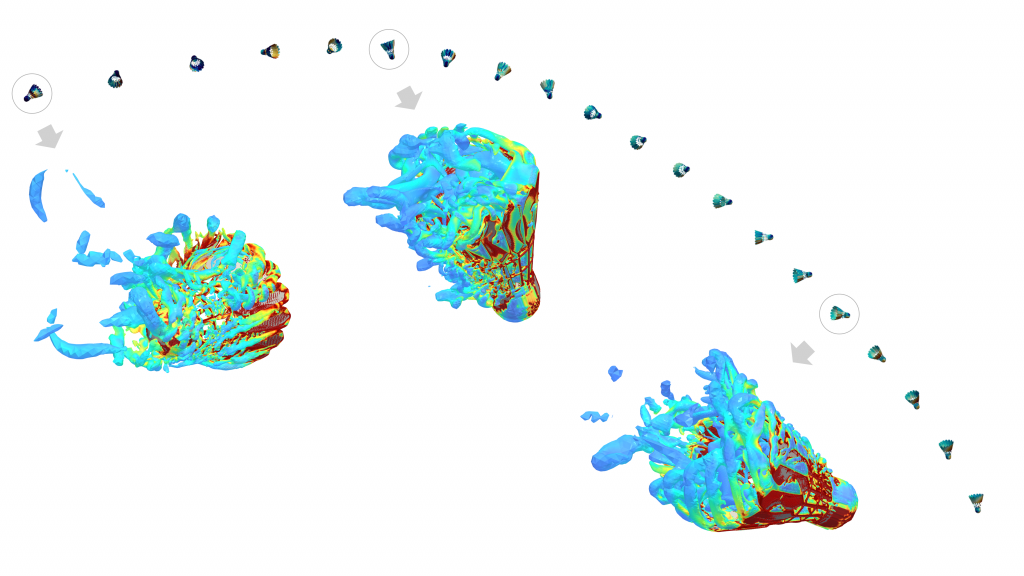3D computational fluid dynamics simulations illustrate effects of controversial badminton “spin serve” on shuttlecock trajectories.
From the Journal: Physics of Fluids

WASHINGTON, Aug. 19, 2025 — One of the world’s most popular sports, badminton is played by around 220 million people across the globe. As with other racket sports, a well-executed serve can establish a consequential advantage at the start of a rally.
The “spin serve” was introduced by a Danish player at the Polish Open 2023 badminton tournament. The technique adds pre-spin before the racket touches the shuttlecock, whose natural spin is typically determined by its feathers’ inclination angles, often rendering a shuttlecock flight trajectory very unpredictable.
In fact, the technique proved so effective that the Badminton World Federation placed an interim ban on its use in response to the professional community. Players and coaches complained about the difficulty it presented, and there was concern it would compromise the excitement of a game animated by extended rallies.
In Physics of Fluids, by AIP Publishing, researchers from the Hong Kong University of Science and Technology and Peking University, in China, used computational fluid dynamics (CFD) and aerodynamic experiments to explore the phenomenon of the controversial serving technique.
“We were interested in the underlying aerodynamics,” said author Zhicheng Zhang. “Moreover, revealing the effects of pre-spin on the trajectory and aerodynamics of a shuttlecock can help players learn the art of delivering a spin serve, and perhaps help players on the other side of the net to return the serve.”
The researchers used CFD to simulate the trajectories of a shuttlecock during serves under three conditions: without pre-spin, with pre-spin in the direction of the shuttlecock’s natural spin, and with pre-spin against the natural spin. They found that the shuttlecock undergoes three phases during the serve: the turnover phase, the oscillation phase, and the stabilization phase.
“Pre-spin affects the oscillating behavior of the shuttlecock, and the spin serve with pre-spin opposing the shuttlecock’s natural rotation tends to prolong the oscillation phase,” said Zhang. “The efficacy of the spin serve also depends on the rotational direction of the pre-spin velocity.”
The research presented the first 3D CFD simulations to examine shuttlecock trajectory during spin serves. Inspired by the unsteady motions they observed in the simulations, the researchers said they want to study more serving strategies — to reveal the physics behind them and to help the many players who love the sport.
“Our future research will focus on capturing shuttlecock trajectories using motion capture systems and helping athletes refine their serving skills,” said Zhang.
###
Article Title
Shuttlecock trajectory during spin serves
Authors
Zhicheng Zhang, Zhenjun Peng, Xiangru Li, Zhida Ma, Peng Zhou, and Xun Huang
Author Affiliations
Hong Kong University of Science and Technology and Peking University
